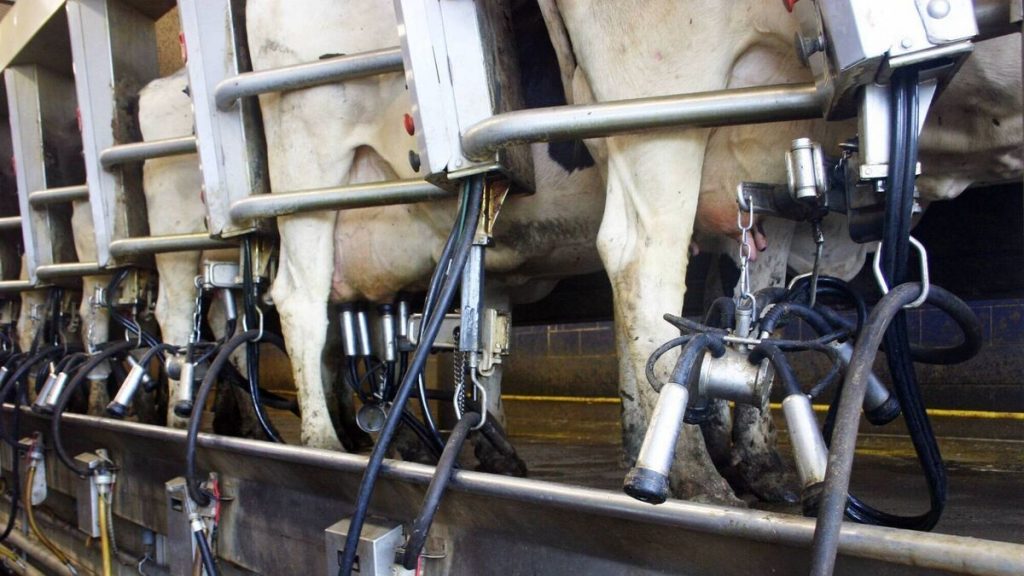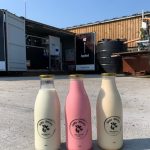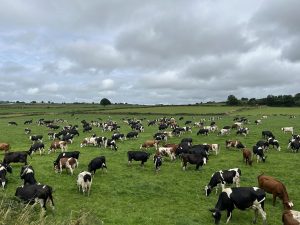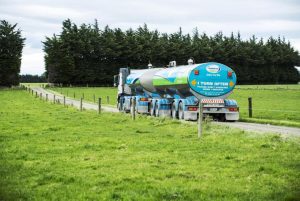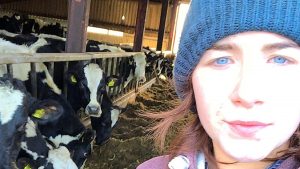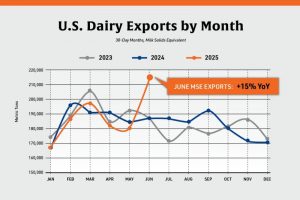
Sluggish milk production in the world’s No 1 dairy exporting nation is likely to be a big factor in milk price trends going forward.
Milk deliveries in New Zealand in August were down 4.2% compared to August 2020.
Milk production statistics for September and October are awaited, as New Zealand’s supply pattern approaches its annual peak, but local sources say that production weakness continued since August, without the fine weather needed for pasture growth peaks in October and November.
They expect New Zealand’s annual production to fall, perhaps by 1% compared to last year’s record level of production.
Since June, farmers down under battled a prolonged, wet winter and early spring. In August, milk production was down 4.8% (4.2% on a milk solids basis), leaving milk production for the season-to-date down 2.4% (1.8% on a milk solids basis).
Pasture production was set back by wetter-than-normal conditions.
The Chairperson of ICMSA’s Dairy Committee said the association is confident that that the next round of price announcements scheduled for the end of the first week of November will see a rise in the prices paid to Irish suppliers.
Gerald Quain said that the international demand for dairy products was solid and set against declining supply figures was moving prices up significantly as evidenced in the latest Dutch quotes. He cited Fonterra’s decision announced on Monday to settle on a $8.40 per kgMS as the price to be paid to its member suppliers. He said that this is the joint highest price that the NZ giant has ever paid to its member-suppliers and comes as US production slows down due to the increases in feed costs.
There is a severe shortage of staffing on New Zealand dairy farms, due to the Government effectively closing the borders as part of its Covid-19 measures. The industry has said it needs 2,000 to 4,000 workers, but the Government will allow in only 200 agricultural workers, who have to go through managed isolation and quarantine.
Farmers are also having to adjust to new water protection and climate change regulations (by 2030, methane emissions are to be reduced by 10% below 2017 levels, then by a yet to be decided figure between 24% and 47%, by 2050. All net emissions of other greenhouse gases are to be reduced to zero by 2050).
The slowdown in milk production in New Zealand and other key production regions, and buoyant import purchasing from Asian buyers, resulted in global dairy commodity prices lifting through August and into September.
In the United States, milk production expanded by 1.1% in August, which was below the recent trendline.
Along with the weather, rising costs of feed and other inputs are having a negative effect on milk production globally.
Milk production in the EU-27 (the world’s largest dairy exporting region) was down 0.6% in July, driven by falling deliveries in Germany and France. No more than 0.3% milk growth is expected for the EU in 2021 (with the extra milk coming primarily from Ireland, Italy, and Poland).
Due to rising feed costs in the US, dairy cows have become too expensive to feed resulting in a fall in herd size and milk production.
The US herd shrank by 85,000 cows between June and September, the biggest four-month drop since 2009. Milk production is consequently less than expected, rising in September just 0.2% from last year, falling way short of forecasts of 1.3%.
Lower milk production could mean that prices for dairy products could be more expensive, and add to rising food inflation that’s already hitting Americans’ wallets.
Prices for American dairy products have been climbing recently, helped by the bullish production report, said Matt Gould, editor of The Dairy Market Analyst. Global milk supplies are tight, and butter in particular is limited, he said.
Sources in New Zealand expect weak global supply to underpin global dairy prices at or around current high levels for at least the rest of 2021.
They expect falling global production and export availability to offset predicted slower or falling import volumes into China (after runaway imports so far this year, including growth in New Zealand dairy exports to China of 45% for the first eight months of 2021).
Here in Ireland, the big milk processors agreed last week that dairy markets had improved, as they announced increased prices for September milk.
One of the last to post a September price was Carbery Group, adding 1c per litre (cpl) for milk delivered in September, although with a warning that cheese (its main product) is lagging behind in the dairy markets.
A Carbery spokesperson said, “While dairy markets are performing strongly, the price of cheese is not as strong as other commodities. However, we are committed to supporting our suppliers, and are therefore increasing our milk price by 1cpl.” If this decision is replicated across the Bandon, Barryroe, Drinagh and Lisavaird co-ops, it will result in an average price for September of 37.2cpl, including VAT and 0.5cpl Somatic Cell Count bonus.
Glanbia kicked off price announcements with a 1 cpl increase to a base milk price for September of 36.18 cpl.
Farmers will also receive a 0.42 cpl payment from Glanbia on all milk supplied in September as their ‘Share of GI Profit’. They said the Glanbia Ireland base price and Co-op “Share of GI Profit” payment will be adjusted to reflect the actual constituents of milk delivered by suppliers.
Glanbia Ireland Chairman John Murphy said: “Dairy markets have strengthened in recent weeks, mainly due to weaker milk supply from key dairy regions. Higher farm input costs and other factors are curbing milk supply growth. There are significant inflationary pressures at all parts of the supply chain, which we are monitoring closely.”
Lakeland Dairies followed with a 1 cpl increase to a base milk price of 37.5c. The co-op said global dairy markets remained steady, with some seasonal adjustments in milk supply taking place across Europe, and currently stable patterns of international demand.
Kerry Group also went with a 1c increase.
Dairygold Co-op added 0.75cpl, bringing their price to 37c, with a spokesperson saying “global milk supply has eased over the past few months and the supply outlook to year-end will be more modest. Combined with Covid-19 recovery continuing, dairy demand has picked up in recent weeks with markets firmer. ”
Farmers in West Cork will be hoping that Carbery Group can avail of increased EU cheese shipments to the US and China continuing to make up for any losses of exports to the UK.
However, there was a 2% cheese production growth in the EU in the first half of 2021, so the market depends heavily on global foodservice recovering after Covid lockdowns.
